| Weight | 1 lbs |
|---|---|
| Dimensions | 9 × 5 × 2 in |
| host | mouse |
| isotype | IgG2b |
| clonality | monoclonal |
| concentration | concentrate, predilute |
| applications | IHC |
| reactivity | human |
| available size | 0.1 mL, 0.5 mL, 1 mL concentrated, 7 mL prediluted |
mouse anti-Cytokeratin 17 monoclonal antibody (E3) 6137
Price range: $160.00 through $528.00
Antibody summary
- Mouse monoclonal to Cytokeratin 17
- Suitable for: Immunohistochemistry (formalin-fixed, paraffin-embedded tissues)
- Reacts with: Human
- Isotype:IgG2b
- Control: Squamous cell carcinoma or skin
- Visualization: Cytoplasmic
- 0.1, 0.5, 1.0 mL concentrated, 7 mL prediluted
mouse anti-Cytokeratin 17 monoclonal antibody E3 6137
| target relevance |
|---|
| Protein names Keratin, type I cytoskeletal 17 (39.1) (Cytokeratin-17) (CK-17) (Keratin-17) (K17) |
| Gene names KRT17,KRT17 |
| Protein family Intermediate filament family |
| Mass 48106Da |
| Function FUNCTION: Type I keratin involved in the formation and maintenance of various skin appendages, specifically in determining shape and orientation of hair (By similarity). Required for the correct growth of hair follicles, in particular for the persistence of the anagen (growth) state (By similarity). Modulates the function of TNF-alpha in the specific context of hair cycling. Regulates protein synthesis and epithelial cell growth through binding to the adapter protein SFN and by stimulating Akt/mTOR pathway (By similarity). Involved in tissue repair. May be a marker of basal cell differentiation in complex epithelia and therefore indicative of a certain type of epithelial 'stem cells'. Acts as a promoter of epithelial proliferation by acting a regulator of immune response in skin: promotes Th1/Th17-dominated immune environment contributing to the development of basaloid skin tumors (By similarity). May act as an autoantigen in the immunopathogenesis of psoriasis, with certain peptide regions being a major target for autoreactive T-cells and hence causing their proliferation. {ECO:0000250|UniProtKB:Q9QWL7, ECO:0000269|PubMed:10844551, ECO:0000269|PubMed:15795121, ECO:0000269|PubMed:16713453}. |
| Subellular location SUBCELLULAR LOCATION: Cytoplasm {ECO:0000250|UniProtKB:Q9QWL7}. |
| Tissues TISSUE SPECIFICITY: Expressed in the outer root sheath and medulla region of hair follicle specifically from eyebrow and beard, digital pulp, nail matrix and nail bed epithelium, mucosal stratified squamous epithelia and in basal cells of oral epithelium, palmoplantar epidermis and sweat and mammary glands. Also expressed in myoepithelium of prostate, basal layer of urinary bladder, cambial cells of sebaceous gland and in exocervix (at protein level). {ECO:0000269|PubMed:10651700, ECO:0000269|PubMed:10844551, ECO:0000269|PubMed:1281771, ECO:0000269|PubMed:2481679}. |
| Structure SUBUNIT: Heterodimer of a type I and a type II keratin. KRT17 associates with KRT6 isomers (KRT6A or KRT6B). Interacts with TRADD and SFN (By similarity). {ECO:0000250}. |
| Post-translational modification PTM: Phosphorylation at Ser-44 occurs in a growth- and stress-dependent fashion in skin keratinocytes, it has no effect on filament organization. {ECO:0000269|PubMed:22006917}. |
| Involvement in disease DISEASE: Pachyonychia congenita 2 (PC2) [MIM:167210]: An autosomal dominant ectodermal dysplasia characterized by hypertrophic nail dystrophy resulting in onchyogryposis (thickening and increase in curvature of the nail), palmoplantar keratoderma and hyperhidrosis, follicular hyperkeratosis, multiple epidermal cysts, absent/sparse eyebrow and body hair, and by the presence of natal teeth. {ECO:0000269|PubMed:10571744, ECO:0000269|PubMed:11348474, ECO:0000269|PubMed:11874497, ECO:0000269|PubMed:11886499, ECO:0000269|PubMed:15102078, ECO:0000269|PubMed:15795125, ECO:0000269|PubMed:16250206, ECO:0000269|PubMed:16620218, ECO:0000269|PubMed:16625196, ECO:0000269|PubMed:17719747, ECO:0000269|PubMed:18547302, ECO:0000269|PubMed:19470054, ECO:0000269|PubMed:21326300, ECO:0000269|PubMed:23278621, ECO:0000269|PubMed:23855588, ECO:0000269|PubMed:7539673, ECO:0000269|PubMed:9008238, ECO:0000269|PubMed:9767294}. Note=The disease is caused by variants affecting the gene represented in this entry.; DISEASE: Steatocystoma multiplex (SM) [MIM:184500]: Disease characterized by round or oval cystic tumors widely distributed on the back, anterior trunk, arms, scrotum, and thighs. {ECO:0000269|PubMed:16620218, ECO:0000269|PubMed:9008238, ECO:0000269|PubMed:9767294}. Note=The disease is caused by variants affecting the gene represented in this entry.; DISEASE: Note=KRT16 and KRT17 are coexpressed only in pathological situations such as metaplasias and carcinomas of the uterine cervix and in psoriasis vulgaris.; DISEASE: Note=Defects in KRT17 may be the cause of a keratinization disorder with associated thrombocytopenia characterized by generalized harlequin ichthyosis that progress into palmoplantar keratoderma. {ECO:0000269|PubMed:34686882}. |
| Target Relevance information above includes information from UniProt accession: Q04695 |
| The UniProt Consortium |
Data
 |
| Human pancreatic ductal carcinoma stained with anti-keratin 17 antibody using peroxidase-conjugate and DAB chromogen. Note the cytoplasmic staining of tumor cells. |
Publications
| pmid | title | authors | citation |
|---|---|---|---|
| We haven't added any publications to our database yet. | |||
Protocols
| relevant to this product |
|---|
| IHC |
Documents
| # | SDS | Certificate | |
|---|---|---|---|
| Please enter your product and batch number here to retrieve product datasheet, SDS, and QC information. | |||
Only logged in customers who have purchased this product may leave a review.
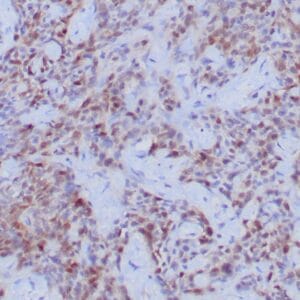
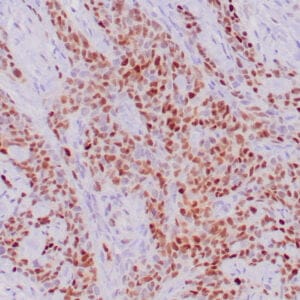
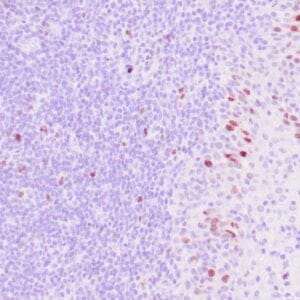
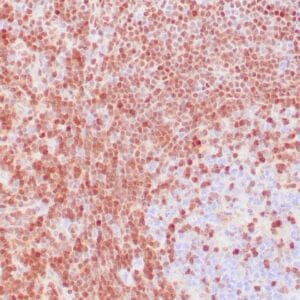
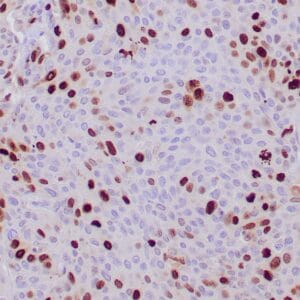
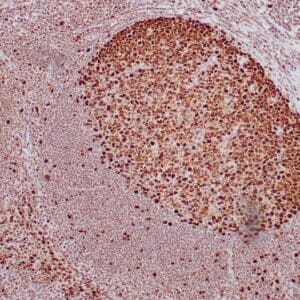

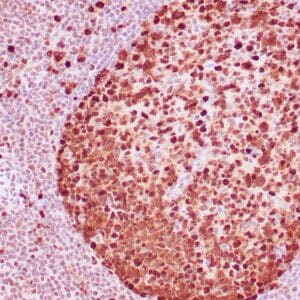
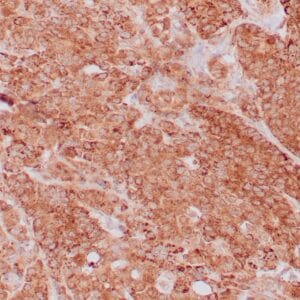


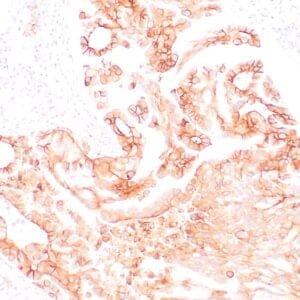
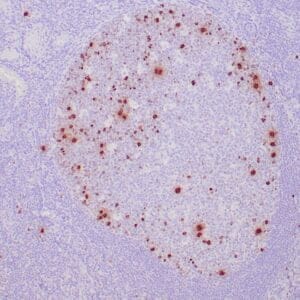

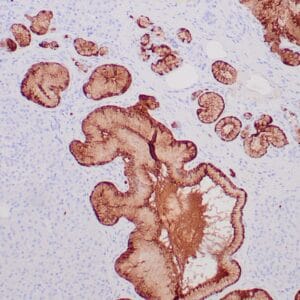
Reviews
There are no reviews yet.